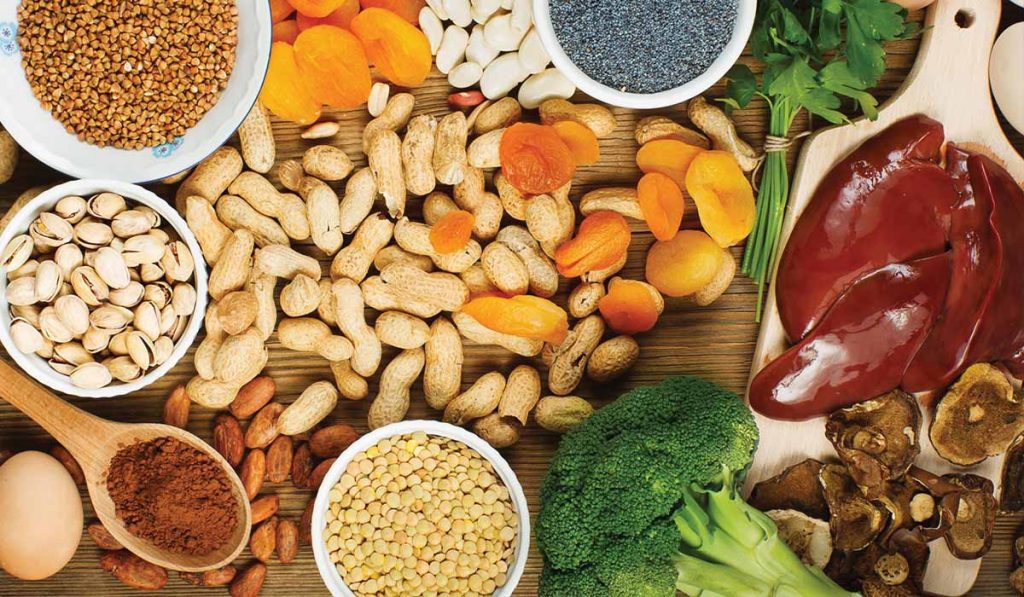By Jessica Bauer
In this article we are going to discuss:
1) What is iron
2) What is so important about iron
3) How much do children need
The purpose of this article is to help parents ensure your child is getting the right amount of iron. This is not aimed for individual advice or for children experiencing iron deficiency or low iron. Please seek further dietary advice from an Accredited Practising Dietitian and General Practitioner or Paediatrician if you feel your child isn’t meeting his or her requirements.
1: What is iron?
Iron is what we call a trace mineral– meaning we only need it in small amounts. Other trace minerals include; iodine, manganese, zinc, copper, selenium and fluoride. Compared to macro minerals, which we need large amounts to perform specific roles in our body, and which include calcium, phosphorus, magnesium, sodium, chloride, potassium and sulphur.
2: What is so important about iron?
Iron has a very important role in transporting oxygen around in our bloods and also it is important for producing energy and ensuring our immunity is optimal.
There are two types of iron that can be found in our diets; these include haem iron and non-haem iron.
HAEM IRON
Haem iron is a type of iron that is only found in animal products. This type of iron is very well absorbed by our body. Common food source of haem iron include beef, lamb, pork, kangaroo, chicken, seafood and offal.
NON HAEM IRON
This type of iron is found in plant based products, and it is not as well absorbed in our bodies. Common food sources of non-haem iron include wholegrain bread and cereals, iron fortified cereals (i.e. Weetbix, Special K, and Uncle Toby’s Plus Iron), legumes and beans, dark leafy vegetables, eggs, peanut butter and nuts.
Factors that can increase iron absorption
As mentioned before haem iron is very well absorbed by our body however non-haem iron is poorly absorbed so there are a few thing you can do in your child’s diet to ensure their non-haem iron sources are being absorbed.
Vitamin C is a great “helper” for absorption of non-haem iron.
Try adding orange slices in salads or bean salads, serve capsicum, broccoli, tomatoes or cabbage with any protein-containing main meals.
Other sources of vitamin C include:
- Citrus fruits e.g. orange, lemon
- Tropical fruits e.g. pineapple
- Berries e.g. strawberries, raspberries
- Vegetables e.g. capsicum, tomatoes, cabbage or broccoli.
Factors that can decrease iron absorption
There are also certain foods which should not be consumed with iron rich food; as it can reduce its absorption. Some of these foods include phytates (found in nuts, legumes and bran), tannins (found in tea and coffee) and calcium.
So to ensure your child is getting the best chance of absorbing all their iron from their diet, only give milk in small amounts (depending on age) and don’t give milk with a meal that will contain iron based foods.
3: How much do children need?
The current recommended amount of iron for a child aged 9 – 13 year old is 8mg per day; this changes once the child is 14 years old.
A 14 year old boy requires 11mg per day and a 14 year old girl requires 15mg per day.
The amount for 14 year old girl is higher due to the potential start of menstruation.
Take home tips
- Remember to give your a child a variety of iron containing foods from both the non-haem and haem groups
- Avoid milk at dinner times as this can potentially inhibit the absorption of iron
- Add vitamin C containing foods to your child’s meals that contain haem and or non-haem iron for optimal absorption
- If you are worried about your child’s iron intake ALWAYS consult a General Practitioner and Accredited Practising Dietitian.
To help make things easier refer to the table below to see how much iron is in food.
| Food (serving size) | Iron (mg) |
| PROTEIN FOODS | |
| Kangaroo (100g) | 4.4 |
| Lean beef (100g) | 3.1 |
| Lean lamb (100g) | 2.5 |
| Chicken (100g) | 0.9 |
| Lean pork (100g) | 1.4 |
| Small tuna can | 1.0 |
| Regular sardine tin | 3.24 |
| 1 egg | 1.1 |
| 1 small can baked beans (140g) | 2.24 |
| WHOLEGRAIN CARBOHYDRATE | |
| 2 original Weet-Bix | 3.0 |
| 1 cup of special K | 3.0 |
| 1 cup of oats | 1.3 |
| 1 slice wholegrain bread | 0.63 |
| 1 slice wholemeal bread | 0.69 |
| 1 slice white bread | 0.36 |
| ½ cup cooked brown rice | 0.4 |
| ½ cup cooked pasta | 0.3 |
| Vegetables and legumesChickpeas (100g) | 6.2 |
| Tofu (100g) | 5.2 |
| Baked Bean (100g) | 1.6 |
| English spinach (100g raw) | 3.0 |
| 5 spears Asparagus | 1.0 |
| ½ cup green beans | 1.0 |
Jessica Bauer is an Accredited Practising Dietitian. She has a passion for children’s health and wellbeing. She loves teaching children about the wonders of food and in her practice she uses food to do good. She spent her childhood in snowy mountains of Switzerland and then spent her adolescent years running around the sandy beaches of Frankston – the best of both worlds. In her spare time, she loves finding that perfectly brewed coffee and jumping out of airplanes.

